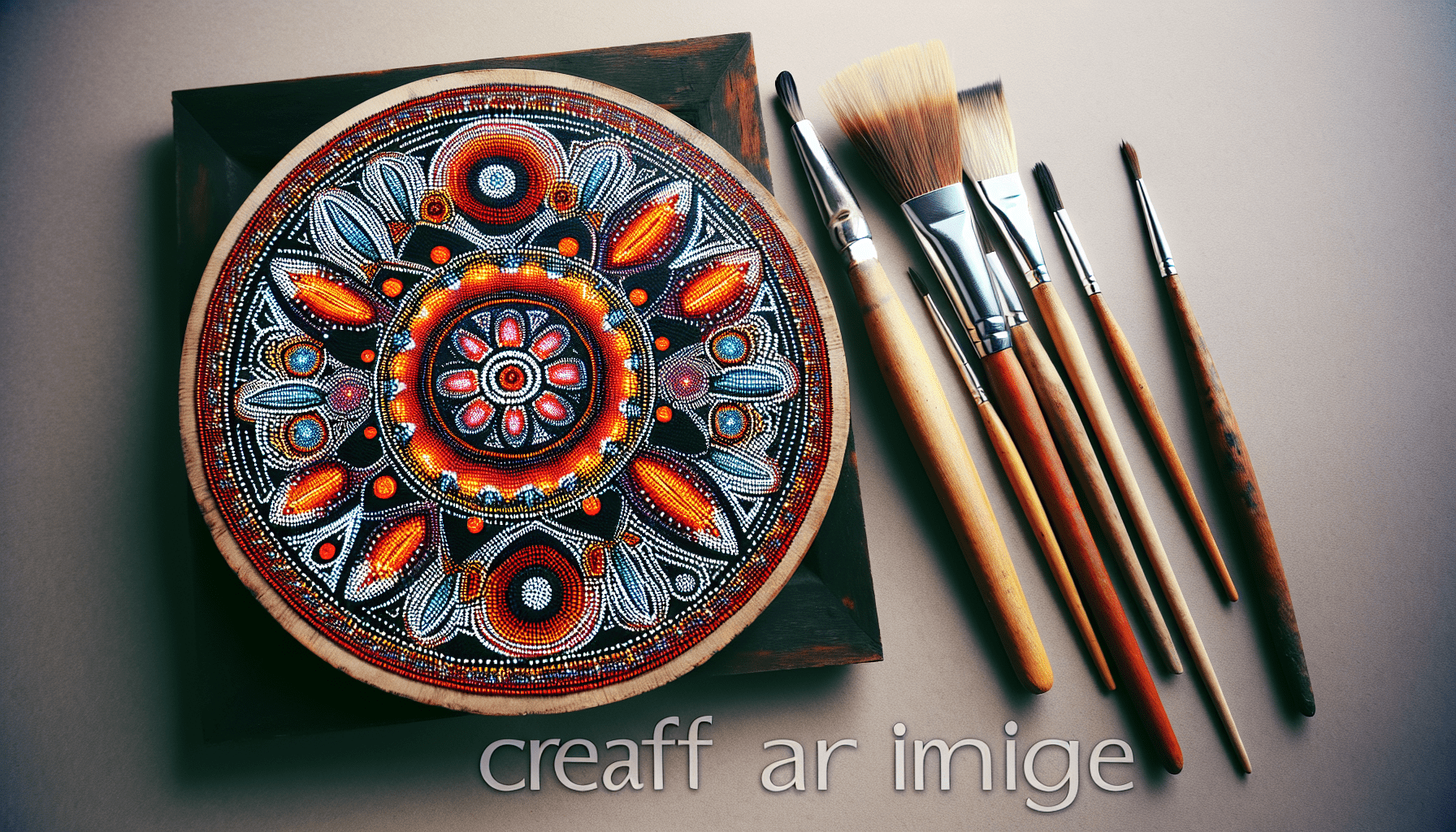Have you ever wondered about the origins of Aboriginal dot painting and who can be credited with this unique and culturally rich form of artistic expression? Aboriginal dot painting is not just a style of art but is deeply embedded in the cultural history and storytelling traditions of Indigenous Australians. This article aims to explore the origins, influences, and significance of this art form, alongside uncovering the individuals and communities who played pivotal roles in its development.

Understanding Aboriginal Dot Painting
Aboriginal dot painting is a part of the broader Aboriginal Australian art tradition. It involves using dots made with paint to create images, often used to depict stories, landscapes, and cultural symbols. This form of expression has become synonymous with Australian Indigenous art, yet it also carries deeper meanings and connections to Aboriginal culture and spirituality.
The Origins of Aboriginal Dot Painting
The practice of using dots in Australian Indigenous art began in the 1970s. The Pintupi people, based in the Papunya settlement in the Northern Territory, were instrumental in pioneering this style. While their art always held spiritual significance, the introduction of the dot painting technique marked a new era of public awareness and appreciation for Aboriginal art.
Key Figures in the Development of Dot Painting
While the creation of Aboriginal dot painting cannot be attributed to a single individual, several key figures contributed significantly to its development. One such individual is Geoffrey Bardon, a school teacher who worked in Papunya during the early 1970s. Bardon played a crucial role by encouraging local artists to paint their stories on materials like canvas.
Geoffrey Bardon’s Influence
Geoffrey Bardon’s work in the community is often credited with sparking the dot painting movement. He provided artists with the materials they needed and encouraged them to share their cultural narratives through paint. This collaboration led to the creation of the Papunya Tula Artists, a cooperative that continues to be a vital force in Aboriginal art to this day.
The Role of the Papunya Tula Artists
The Papunya Tula Artists collective was established by a group of Aboriginal artists with the guidance of Geoffrey Bardon. Clifford Possum Tjapaltjarri, Kaapa Tjampitjinpa, and Johnny Warrangkula Tjupurrula were among the early members who left a lasting impact on Aboriginal art and the wider art world. Their works are celebrated for their depth, complexity, and cultural authenticity.
Prominent Artists
- Clifford Possum Tjapaltjarri: Known for his intricate use of color and composition, Tjapaltjarri was instrumental in popularizing dot painting both within Australia and internationally.
- Kaapa Tjampitjinpa: His work often featured traditional symbols and stories, contributing to the preservation and communication of Aboriginal culture.
Cultural and Spiritual Significance
Dot paintings are more than just artworks; they hold deep cultural and spiritual meanings. Each dot or symbol used in a painting can signify different elements of Aboriginal Dreamtime stories, which are foundational to Indigenous Australian spirituality. These artworks serve as a powerful means of keeping culture alive, and they provide insights into Aboriginal views of the world, ancestry, and spirituality.
The Secret Language of Symbols
The use of symbols in Aboriginal dot paintings is often considered a form of secret language. These symbols can represent a variety of concepts, from natural elements to mythological beings. The artist’s use of this symbolic language is a means of communicating sacred narratives while protecting the knowledge from those unfamiliar with the cultural context.
Symbol Examples
| Symbol Type | Possible Meanings |
|---|---|
| Concentric Circles | Waterhole, campsite, or meeting place |
| U-shapes | People sitting |
| Footprints | Journeys, animals, or paths |
| Lines | Paths traveled or rainfalls |
The Modern Impact of Dot Painting
Today, Aboriginal dot painting is recognized globally as a quintessential form of Australian art. It not only represents a unique visual aesthetic but also serves as an important educational tool about the richness and diversity of Aboriginal culture. Art galleries around the world celebrate these works, and they have become an essential part of Australia’s national identity.
Preservation and Challenges
While the popularity of Aboriginal dot paintings has grown, it has also brought challenges. Issues of appropriation and the unauthorized replication of these artworks have become prevalent. Efforts are ongoing to educate the public on the cultural sensitivities associated with these pieces and to ensure that Indigenous artists are properly acknowledged and compensated for their work.
Cultural Sensitivity and Legal Protections
To protect Aboriginal artists and their intellectual property, various measures have been implemented. There are strict guidelines governing the reproduction of traditional artworks and symbols. Understanding these guidelines is essential for anyone wishing to engage with or display Aboriginal art respectfully and ethically.
Conclusion
The story of Aboriginal dot painting is one of cultural preservation, innovation, and artistic expression. While no single person can claim the invention of this art form, its development is a testament to the collaboration and shared vision of the many Aboriginal artists and communities who have contributed to its vibrant legacy. As you reflect on the extraordinary journey of dot painting, it becomes evident that this art form is not just a visual delight but a crucial part of Australia’s cultural heritage and storytelling tradition.
Engaging with Aboriginal art invites you to appreciate the beauty of narratives that have transcended generations, offering a connection to the world’s oldest living cultures. Through this understanding, the value of Aboriginal dot painting goes beyond aesthetics, emphasizing the importance of cultural respect and awareness in the global appreciation of Indigenous art.




